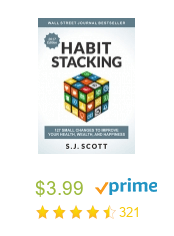
8 Points To Understand Before Filing For Bankruptcy

Understanding When To File Bankruptcy
Are you seriously considering filing bankruptcy due to your current financial problems? Before doing that, you must evaluate all your options and understand the possible effects of this decision. Believe it or not, filing bankruptcy can sometimes turn things around for some debtors, thus giving them a new start. But, you have to evaluate your own situation before filing yours.
You may ask yourself, as soon as you file bankruptcy, what happens next? Will you have enough time to pay everyone you owe? What is its impact on your credit? Below, you will discover the answers to these questions and learn more about the possible effects of filing bankruptcy.

1The Effects Of Filing Bankruptcy
In case you file a Chapter 13 bankruptcy, you will be required to pay off all debts. But, you will have a longer time to accomplish this. In case you don't think that it's financially possible for you to pay off all your debts given the time that you have, perhaps filing a Chapter 7 bankruptcy will be a better move.
Filing a Chapter 7 bankruptcy means that all your debts will be discharged, except for child support and due taxes. Prior to the establishment of the new bankruptcy laws, everyone could file either Chapter 7 or Chapter 13 bankruptcies. However, today's new laws state that a Chapter 7 bankruptcy can only be filed by someone who meets certain qualifications and passes the means test.

2The Means Test
The means test helps in determining whether or not you can file a Chapter 7 bankruptcy. One requirement is that your income should not be more than 80% of your specific area's median income. The median income of a certain area or region is decided by the Department of Housing and Urban Development.
Once the means test is done and you find yourself eligible, then you can choose from two options. If you file a Chapter 13 bankruptcy, you will be given three to five years to pay your creditors based on an agreed upon arrangement. Such could be your case, especially if you earn more than what is allowed in Chapter 7.

3Courts And Payment Plans
To illustrate, let's say that your credit cards have balances. In case there are other debts or accounts in collections, the bankruptcy trustee who is appointed by the court, will sum up all the balances and make a payment plan so that you can pay all of your creditors. The plan is computed by deducting daily expenditures, like transportation, utilities, insurance, and others, to the net income.
The amount left over is the money that you can then use to settle your debts with your creditors. The trustee will divide the amount accordingly so that you can give a monthly payment to all parties. Every month, you are required to submit money to the trustee who then distributes the money to the creditors. This may also come as a surprise, but lenders typically offer the same credit whether or not a bankruptcy was filed.

4How Lenders Treat Bankruptcies
Even if you opt to file a Chapter 13 bankruptcy, you will experience the same treatment as someone who elected to file a Chapter 7 bankruptcy and has had all his debts discharged. This is normal because lenders typically view all bankruptcy types, including discharged debts, in the same way. To a lender, it doesn't matter if a person filed a Chapter 7 or a Chapter 13 bankruptcy because a lender may prefer to have it cleared before four years.
Even though it may take a person five years to complete his payments under a Chapter 13 bankruptcy, a lender could still insist on four years before allowing the borrower to take out a new loan. This means that it will take a person nine years to meet the lending policy. In other words, under a Chapter 13 bankruptcy, debts have to be fully paid within five years, while a person needs four years to build credit.

5Good Versus Bad Credit
What is a good credit and bad credit? The answer is quite simple. You can maintain good credit by keeping your debts low compared with your available credit, as well as by paying loans and other debts on or before they are due. Bad credit is simply doing the opposite. Moreover, good credit is not just all about getting credit, but it also pertains to how responsible you are in using your available credit.
Also, if you filed a Chapter 7 bankruptcy, the date of discharge is usually sixty days or less after the initial request was made. But, there is some uncertainty when it comes to mortgage loans; the preference of one lender may be different from another. Even so, lenders require a borrower to have at least two whole years of credit history. In case you only recently obtained your very first credit card account, you will need some time to establish a credible credit history. Moreover, at least three lines of credit are usually required.

6The Three Standard Types Of Credit
Real estate account, revolving account, and installment loan - these are the three standard types of credit. Installment loan pertains to a condition wherein a specific amount is borrowed, and then an amount is paid to the lender every month until the total debt is fully paid. One common example is an auto loan. As for a revolving account, this is somewhat similar to having a furniture or store credit account.
Then there's the real estate account, which is simply a backed real-estate mortgage. Similar to other forms of credit, each has limits and payments are only made after you have charged something. In order to maintain good credit, you should pay your dues on time every month or so. Open these three lines of credit and maintain these for two years, but ensure that your balances are low and that fees are paid on time.

7The Amount Of Available Credit To Have
There is no exact number as regards to how much credit you should have available at any time. But, a good estimate is about 70% of what you have available in all of your credit lines. For example, if you have a $10,000 credit limit on each of your three credit cards, the ideal amount borrowed should be $3,000 while the remaining $7,000 should remain unused.
Should you increase your trade lines? You do not have to do this if you wish to have an excellent credit score. Before, people placed a lot of importance on how many credit accounts a person had; however, these days, more importance is placed on how an individual manages his accounts. It is better to have eight accounts with zero balances than to have three with significant balances. Also, people often use Sears, JCPenny, and other large department stores in order to get their first credit cards.

8Store Versus Traditional Credit Cards
Regulations governing the use or management of store credit cards are less strict compared with others, but such is still not recommended for those with bad credit scores. There are a few reasons for this. First, consumer goods or department store accounts are typically managed using installment loans, and such is backed by hard collateral.
Let's say that you bought a sofa at a department store and you failed to send in your payments; in such cases, the store's management has the right to reclaim your sofa. This is because the credit was issued based on certain collateral. The second reason is that those who have recently opened their first lines of accounts will normally have low credit lines. A creditor will assess your payment behavior through your payment history and your capability of repaying your debts before deciding to increase your credit line.
Through the details presented above, you have learned more about the possible events that could happen after filing bankruptcy. Though it may be hard to believe at first, filing bankruptcy could be the answer to your current financial problems. If you want to know more about your options, talk to an experienced financial services consultant right away. Remember, you have the power to change your life!
About Author
John Quintana
GET THE FREE MAGAZINE DELIVERED STRAIGHT TO YOU:









































